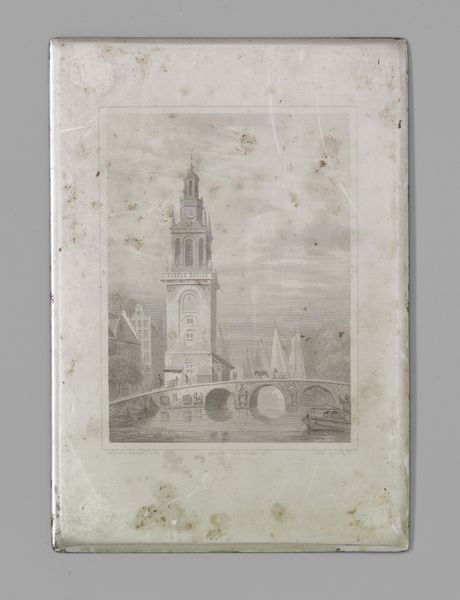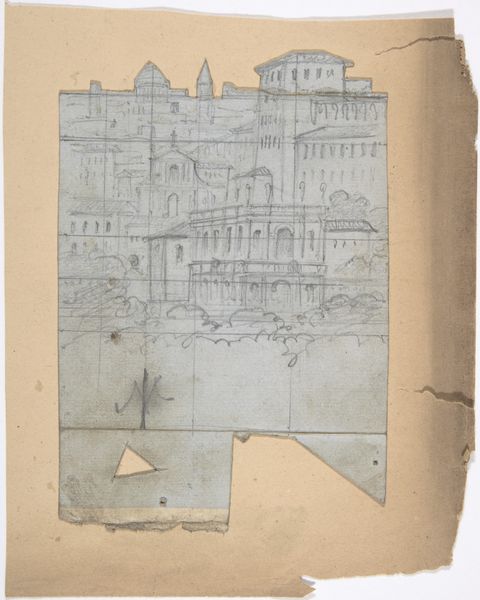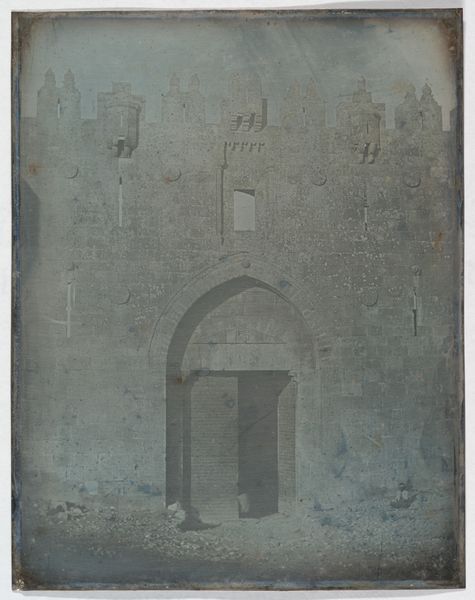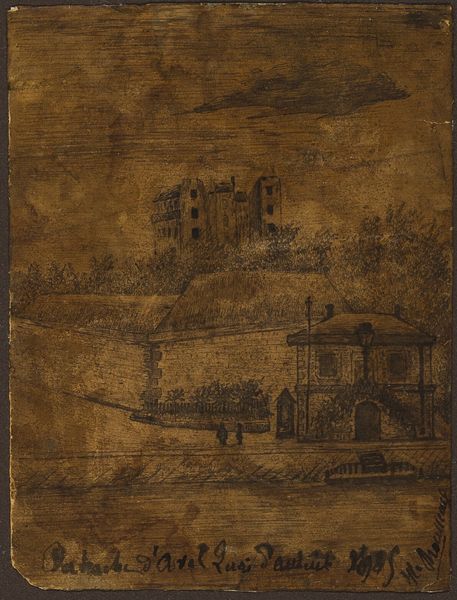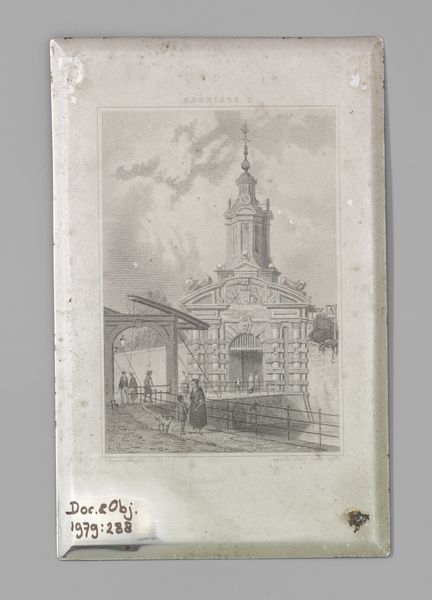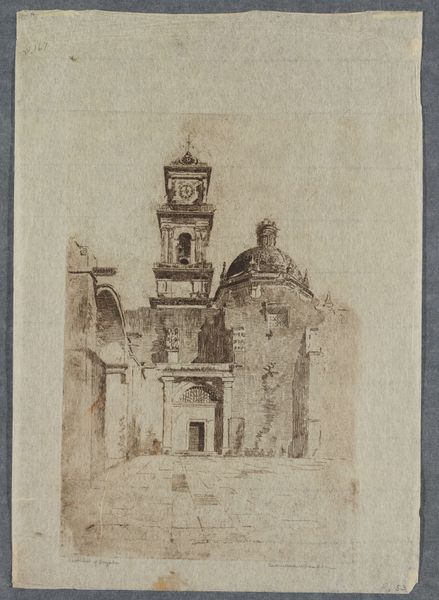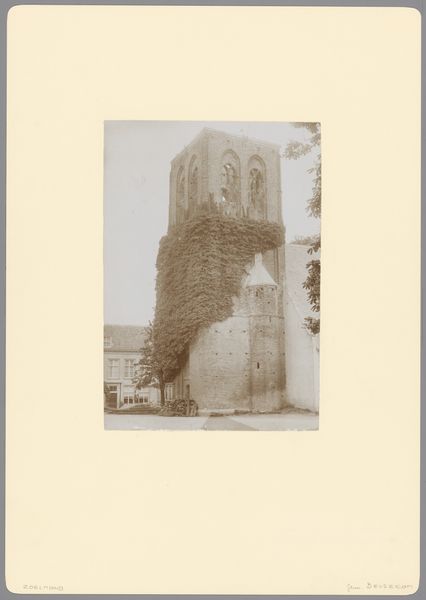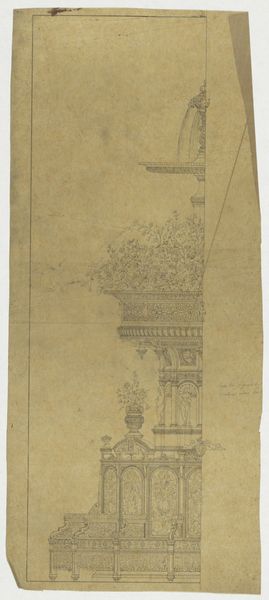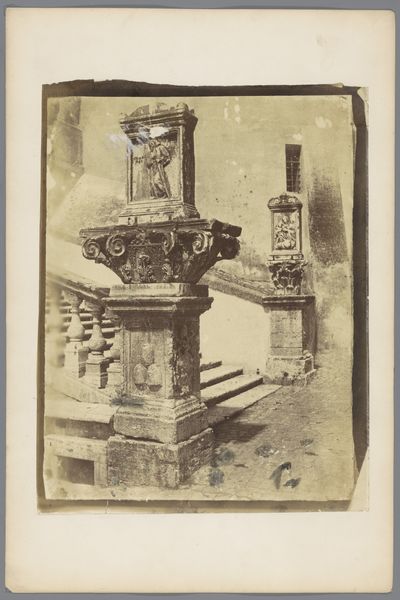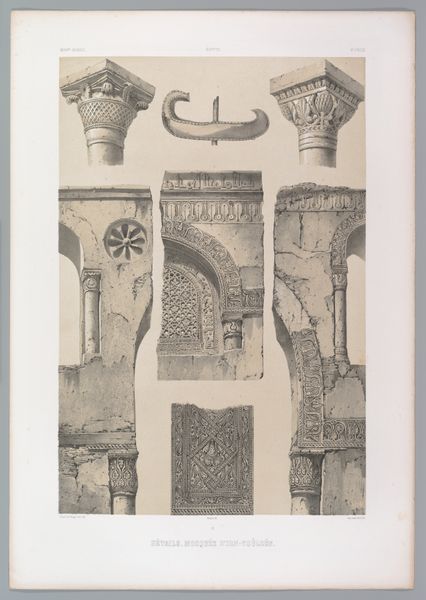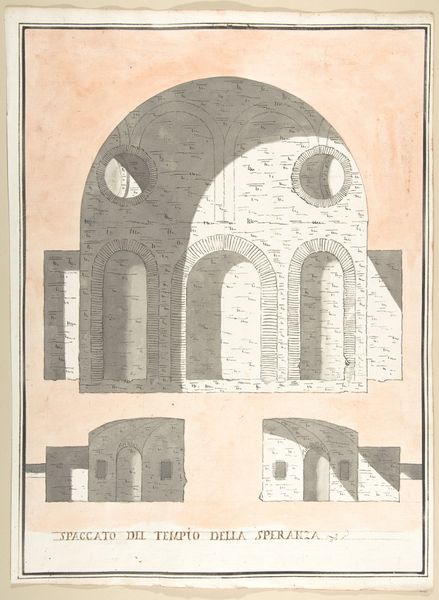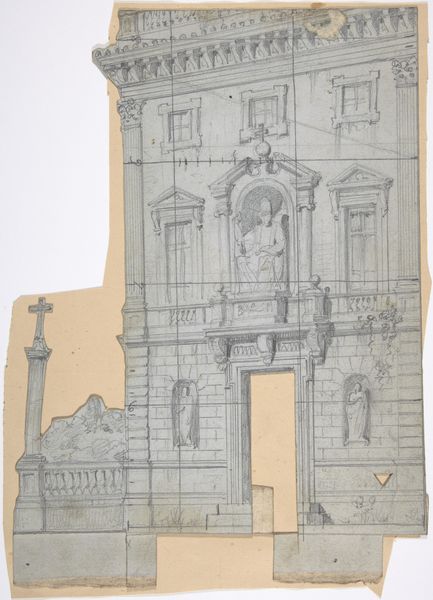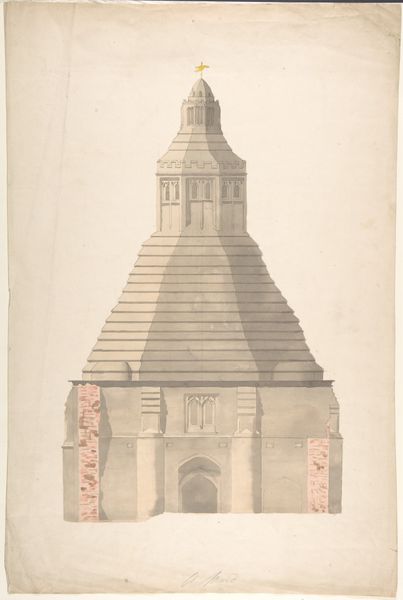![Mosque of Sultan al-Hakim, Cairo (117. Kaire. 1843 Gâma Soultan Ansoun détails [sic]) by Joseph-Philibert Girault de Prangey](/_next/image?url=https%3A%2F%2Fd2w8kbdekdi1gv.cloudfront.net%2FeyJidWNrZXQiOiAiYXJ0ZXJhLWltYWdlcy1idWNrZXQiLCAia2V5IjogImFydHdvcmtzLzg0NDFjYzIyLTkxODItNDIyNC05NzVhLWI3NWZlYjQ1OGI4Mi84NDQxY2MyMi05MTgyLTQyMjQtOTc1YS1iNzVmZWI0NThiODJfZnVsbC5qcGciLCAiZWRpdHMiOiB7InJlc2l6ZSI6IHsid2lkdGgiOiAxOTIwLCAiaGVpZ2h0IjogMTkyMCwgImZpdCI6ICJpbnNpZGUifX19&w=3840&q=75)
Mosque of Sultan al-Hakim, Cairo (117. Kaire. 1843 Gâma Soultan Ansoun détails [sic]) 1842 - 1843
0:00
0:00
photography, architecture
#
photography
#
coloured pencil
#
cityscape
#
islamic-art
#
architecture
Dimensions: Image: 9 7/16 × 3 11/16 in. (24 × 9.4 cm)
Copyright: Public Domain
Editor: Here we have Joseph-Philibert Girault de Prangey's "Mosque of Sultan al-Hakim, Cairo," taken around 1842-1843. It appears to be an early photograph, maybe with some hand-coloring? The architecture has such strong, striking lines! How should we read this work? Curator: Well, let's think about the material conditions that enabled its creation. Photography was still a very new medium, and the process of creating these images – think about the daguerreotype process here, with its specific chemical processes, labor and equipment, and the time involved in both exposing and printing this image. How do these early limitations impact its subject and composition, especially the social conditions it was produced within, compared to, say, painting the same subject? Editor: That’s a great point! I hadn’t considered that. Because it was so laborious, did that influence who got to *be* a subject, as much as *what* became one? Curator: Precisely. Early photography demanded particular infrastructure, chemicals, access… it wasn’t democratic. Notice also the angle, almost reverential in its upward gaze, perhaps speaking to a specific audience’s appreciation for Islamic architecture. Who do you think could afford to view, purchase and consume such images at that time? Editor: Likely European travelers and scholars... People with money and access to those emerging photographic markets, interested in orientalist themes. I can see that the materiality dictated the subject in more ways than I had thought! Curator: And how that photographic consumption further influenced European perceptions of Egyptian culture, framing a narrative intertwined with labor and privilege. Now, what do you make of that vertical orientation? Editor: Interesting. Now, thinking about all that... maybe it's not just about the architecture. It's about documenting power and privilege using a new technology. Thanks for walking me through this. Curator: My pleasure. Remember to consider the economic, material, and labor dimensions shaping the artwork itself. It enriches everything.
Comments
No comments
Be the first to comment and join the conversation on the ultimate creative platform.
